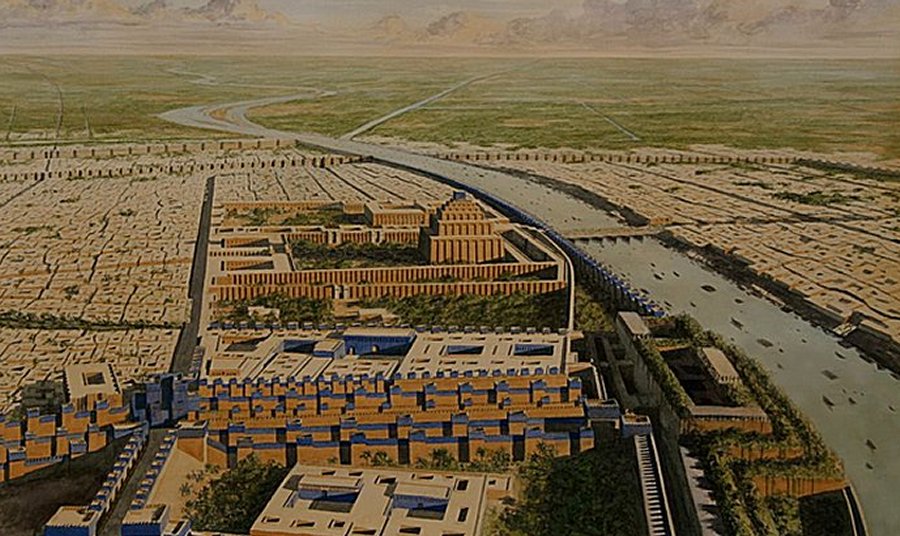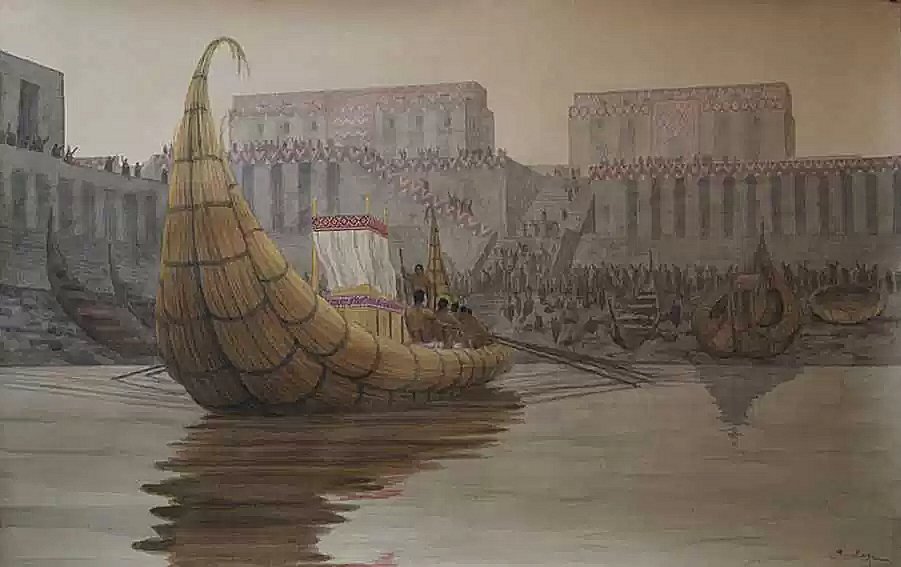Eridu: Pre-Flood City That Belonged To Enki, God Of Creation, Intelligence, Wisdom And Magic
A. Sutherland - AncientPages.com - Modern city Abu Shahrain holds traces of one of the earliest and most sacred cities of the Sumerians – Eridu (E.RI.DU – ‘Home in the Faraway Built’).
According to legend, it was the first city ever established. An ancient Babylonian poem devoted to heroes from the past describes the rise of Eridu as a city:
".... A reed had not come forth,
A tree had not been created,
A house had not been made,
A city had not been made,
All the lands were sea,
Then Eridu was made..."
It was founded by and belonged to Enki, the mysterious god of deep wisdom and magic. Enki was in charge of Earth prior to the arrival of his brother Enlil who is said to have brought civilization to Sumer at this point, or just shortly before.
Also known as ‘Eridug’ (‘mighty place’ or ‘guidance place’), Eridu was located in the desert south of the Euphrates, only 12 km southwest from Ur. Today, it is only a group of hills, covered with sand accompanied by a badly preserved ziggurat built by the son of Shulgi, Amar-Sin ('immortal moon-god') also known as Nanna, and the third king of the Ur Third Dynasty.
Any evidence of earlier inhabitation of Eridu cannot be unearthed because it had been swept away by the Flood.
Eridu was one of the five cities built before the Flood and according to the Sumerian king list, it was the first city to hold kingship.
Unlike the other cities of Sumer, Eridu was not built on sand and mud but in a valley in close vicinity of the Arabian Desert.
Using stone as a building material, made Eridu distinguished from all the other cities in Sumer. The raised platform, on which the city and its temple stood, was faced with a massive retaining wall of sandstone originating in neighboring quarries.
Undoubtedly, the city was once connected with the Persian Gulf, which is confirmed by cuneiform tablets describing Eridu as standing "on the shore of the sea".
In “The Lost Book of Enki” Zecharia Sitchin mentions Endubsar, master scribe, son of Eridu city, servant of the lord Enki, great god. Endubsar confirms that “in the seventh year after the Great Calamity, in the second month, on the seventeenth day, I was summoned by my master the Lord Enki, great god, the benevolent fashioner of Mankind, omnipotent and merciful.
I was among the remnants of Eridu who had escaped to the arid steppe just as the Evil Wind was nearing the city…”
The most important part of the sacred city of Eridu – its urban core - was Enki’s temple ‘House of the Aquifer’ according to cuneiform: E2.ZU.AB; Sumerian: e-abzu. Later, his realm was called ‘House of the Waters’ (cuneiform: E.LAGAB×HAL; Sumerian: e-engur.
The king list says: "When the kingdom came down from heaven, the kingdom was in Eridu." It also says that the first kings of Eridu were indeed long-lived:
The first king of Eridu, and the first king of Sumer, was Alulim, who ruled for 28800 years; Alalngar ruled for 36000 years. 2 kings; they ruled for 64800 years. Then Eridu fell and the kingship was taken to Bad-tibira…”
The kingship continued at Bad-tibira ("Fortress of the Smiths"), identified as modern Tell al-Madineh, located in southern Iraq. It was also one of the pre-Flood cities in the Sumerian King List.
At present, the main ruins remaining from the Third Dynasty of the Ur dynasty occupy an area of about 300 x 400 meters. The oldest settlements date back 5500 years old. Earlier traces of the habitation disappeared in the Flood.
In ancient times, there was a sea line near Eridu and the city was a port situated in the freshwater bay. Currently, the coastline of the Persian Gulf is far more south and Eridu is in the desert.
The modern name of the city is Abu Shahrain.
Written by – A. Sutherland AncientPages.com Senior Staff Writer
Copyright © AncientPages.com All rights reserved. This material may not be published, broadcast, rewritten or redistributed in whole or part without the express written permission of AncientPages.com
Expand for referencesReferences:
Z. Sitchin, The Lost Book of Enki
R. J. Fischer, Historical Genesis: From Adam to Abraham
British Museum
More From Ancient Pages
-
 Rare Bronze Age Sacrificial Offerings, Including A Bent Sword Found In A Bog Near Veksø, Denmark
Archaeology | Dec 3, 2024
Rare Bronze Age Sacrificial Offerings, Including A Bent Sword Found In A Bog Near Veksø, Denmark
Archaeology | Dec 3, 2024 -
 Prometheus ‘Fire Bringer’ – Hero Stealing Fire From Gods Giving It To Mortals
Featured Stories | Sep 5, 2018
Prometheus ‘Fire Bringer’ – Hero Stealing Fire From Gods Giving It To Mortals
Featured Stories | Sep 5, 2018 -
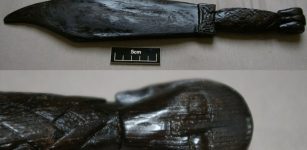 1,000-Year-Old Viking Weaver’s Sword Reveals Its Secrets
Archaeology | Apr 17, 2022
1,000-Year-Old Viking Weaver’s Sword Reveals Its Secrets
Archaeology | Apr 17, 2022 -
 On This Day In History: He Wanted The Bible To Be Available To All – Burned At The Stake On Oct 6, 1536
News | Oct 6, 2016
On This Day In History: He Wanted The Bible To Be Available To All – Burned At The Stake On Oct 6, 1536
News | Oct 6, 2016 -
 Discovery At Fujiwarakyu Palace Complex Offers Better Glimpse Of 7th-Century Japan
Archaeology | Oct 21, 2015
Discovery At Fujiwarakyu Palace Complex Offers Better Glimpse Of 7th-Century Japan
Archaeology | Oct 21, 2015 -
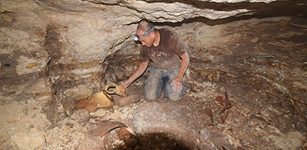 A 2000-Year-Old Jewish Settlement Near Bet Shemesh – Unearthed
Archaeology | Mar 30, 2017
A 2000-Year-Old Jewish Settlement Near Bet Shemesh – Unearthed
Archaeology | Mar 30, 2017 -
 Is The Legendary Tsuchinoko Real?
Featured Stories | Aug 21, 2019
Is The Legendary Tsuchinoko Real?
Featured Stories | Aug 21, 2019 -
 Unique Chachabamba Complex Hidden In Peruvian Forest Reveals Its Secrets
Archaeology | Feb 7, 2019
Unique Chachabamba Complex Hidden In Peruvian Forest Reveals Its Secrets
Archaeology | Feb 7, 2019 -
 How Did Canada’s Oldest Coin Make Its Way To Newfoundland’s South Coast?
Archaeology | Nov 14, 2022
How Did Canada’s Oldest Coin Make Its Way To Newfoundland’s South Coast?
Archaeology | Nov 14, 2022 -
 On This Day In History: Fire Of Skopje Started Intentionally – On Oct 26, 1689
News | Oct 26, 2016
On This Day In History: Fire Of Skopje Started Intentionally – On Oct 26, 1689
News | Oct 26, 2016 -
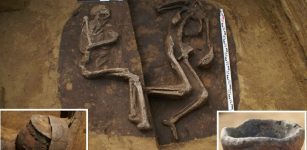 Unusual Grave Of The Trzciniec Culture Is An Archaeological Puzzle
Archaeology | Dec 23, 2019
Unusual Grave Of The Trzciniec Culture Is An Archaeological Puzzle
Archaeology | Dec 23, 2019 -
 Oldest Lunar Calendar Engraved On A Pebble Dated To 10,000 Years Ago
Archaeology | Aug 5, 2019
Oldest Lunar Calendar Engraved On A Pebble Dated To 10,000 Years Ago
Archaeology | Aug 5, 2019 -
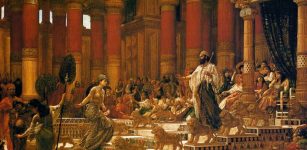 The Magnificent Ancient ‘Flying Airship’ Of King Solomon
Featured Stories | Aug 27, 2018
The Magnificent Ancient ‘Flying Airship’ Of King Solomon
Featured Stories | Aug 27, 2018 -
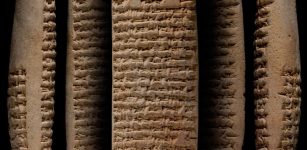 Mystery Of The Proto-Elamite Tablets – Cracking The World’s Oldest Undeciphered Writing
Artifacts | Oct 29, 2012
Mystery Of The Proto-Elamite Tablets – Cracking The World’s Oldest Undeciphered Writing
Artifacts | Oct 29, 2012 -
 Mystery Of The Strange Rock In New England That People Fear To Approach
Featured Stories | Apr 17, 2024
Mystery Of The Strange Rock In New England That People Fear To Approach
Featured Stories | Apr 17, 2024 -
 Werewolf – Ancient Worldwide Belief In Terrible Curse
Myths & Legends | Jun 28, 2021
Werewolf – Ancient Worldwide Belief In Terrible Curse
Myths & Legends | Jun 28, 2021 -
 Olympe De Gouges – First French Feminist Challenged Maximilien de Robespierre And The Jacobins
Featured Stories | Nov 12, 2018
Olympe De Gouges – First French Feminist Challenged Maximilien de Robespierre And The Jacobins
Featured Stories | Nov 12, 2018 -
 Evidence Of Ritualistic Gatherings 35,000 Years Ago Found In The Manot Cave In Galilee, Israel
Archaeology | Dec 12, 2024
Evidence Of Ritualistic Gatherings 35,000 Years Ago Found In The Manot Cave In Galilee, Israel
Archaeology | Dec 12, 2024 -
 Legendary Epic Of King Gesar Who Descended From Heaven And The Ancient Tarna Monastery
Featured Stories | Nov 20, 2021
Legendary Epic Of King Gesar Who Descended From Heaven And The Ancient Tarna Monastery
Featured Stories | Nov 20, 2021 -
 Study Traces DNA Of Inca Emperors To Their Modern-Day Descendants
Archaeology | May 29, 2018
Study Traces DNA Of Inca Emperors To Their Modern-Day Descendants
Archaeology | May 29, 2018


